MIC102 MT1
1/181
Earn XP
Description and Tags
UC Davis Sam Munoz Diaz Spring 2025
Name | Mastery | Learn | Test | Matching | Spaced |
|---|
No study sessions yet.
182 Terms
What is a microbe?
“free living organisms so small that are only visible under the microscope”
What are some exceptions to microbes?
Visible to the naked eye
Ex. Epulopiscium fishelsoni
Can only live within cells (no free living; intracellular parasite)
Ex. Mycobacterium leprae
Ex. Viruses
How are bacteria, fungi, archaea, protists, viruses, prions classified? (Cellular/Acellular)
Cellular: fungi, protists, bacteria (prokaryotes), archaea (prokaryotes)
Acellular: Viruses, prions
How are microbes classified?
phylogenetically
What do we want in a gene to be good for phylogenetics?
selectively neutral
conserved regions (for PCR primers)
Shared across all organisms to be analyzed (16s rRNA- “universal” gene)
What are the three domains of life?
Archaea, Eukaryotes, Bacteria and relatives
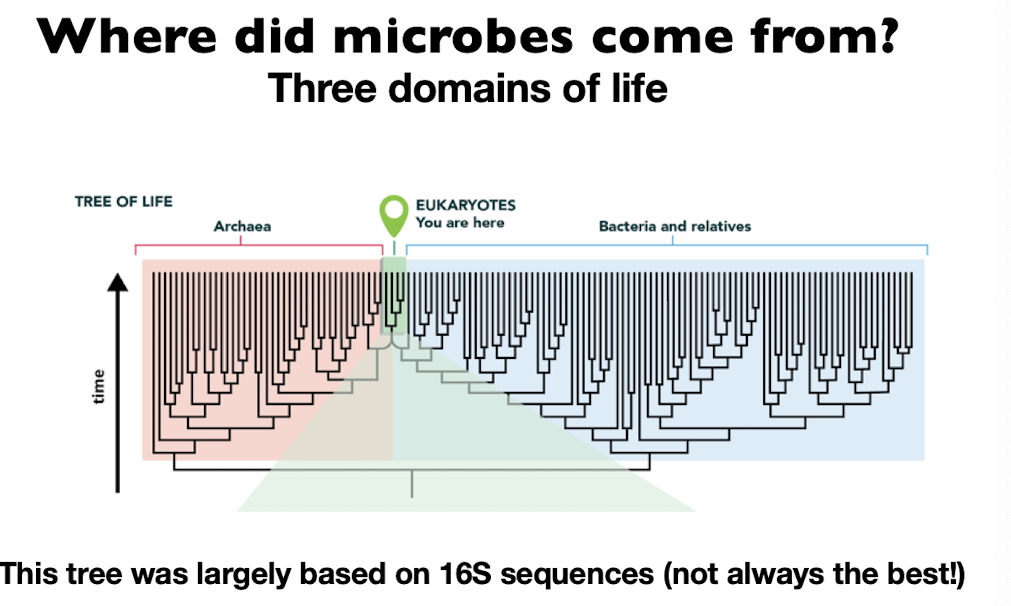
Why are microbes important? Global reason
photosynthestic bacteria (cyanobacteria) oxygenated the planet (cooling the planet)
Microbes are involved in global biogeochemical cycles (carbon, nitrogen)
Why are microbes important (within your body)
Roughly 9/10 of the cells in your body are microbes
10k different species make up human microbiome
Gut bacteria helps make vitamin B and K
What kind of diseases do microbes cause?
Bacterial
Food poisoning (E. coli/ Salmonella), STIs (gonorrhea), TB
Viral
Food poisoning (Norovirus), STIs (HPV/HIV/Herpes), Influenza, Ebola
Fungal
Ringworm
“Protist” (microbial eukaryote)
Giardia
Resolution needs to be ___ than what were trying to see (bacteria are ~1µm)
smaller
What kind of staining would kill the cells
Safranin and Crystal Violet in the Gram stain
Phase Contrast
Increase the contrast by changing the quality of light, can see movement
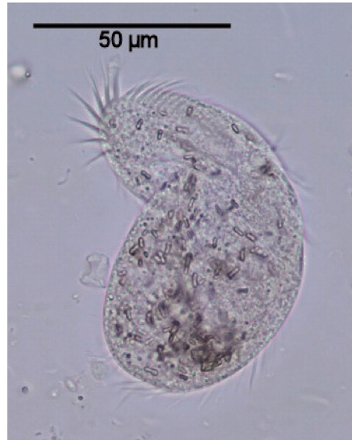
Fluorescence
Fluorochromes that emit light of specific wavelengths when excited by light of a different wavelength
Can be an external dye, attached to a molecule such as an antibody or DNA probe
Can be engineered into genes and viewed in living cells
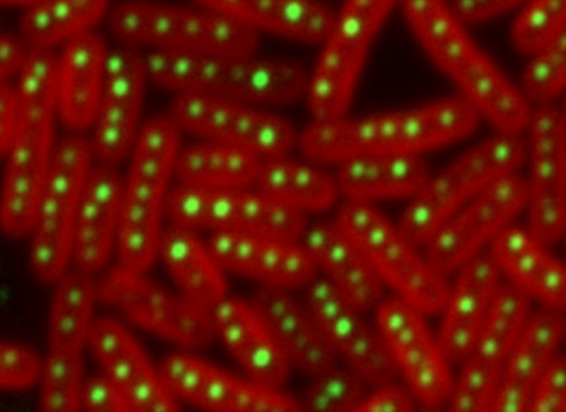
Electron Microscopy
Magnifies up to ~500,000x
n=0.005nm; d=~0.2nm
Scanning EM: to view exterior (surfaces, “outside”)
Transmission EM: to view internal structures, smallest specimens
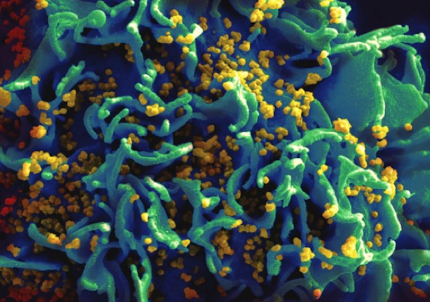
Where does life come from? The Endosymbiotic Theory
Infoldings in the plasma membrane gave rise to end-membrane components, including a nucleus and endoplasmic reticulum
In a first endosymbiotic event, the ancestral eukaryote consumed aerobic bacteria that evolved into mitochondria
In a second endosymbiotic event, the early eukaryote consumed photosynthetic bacteria that evolved into chloroplasts

What are the three domains of life?
Bacteria, archaea, eukarya
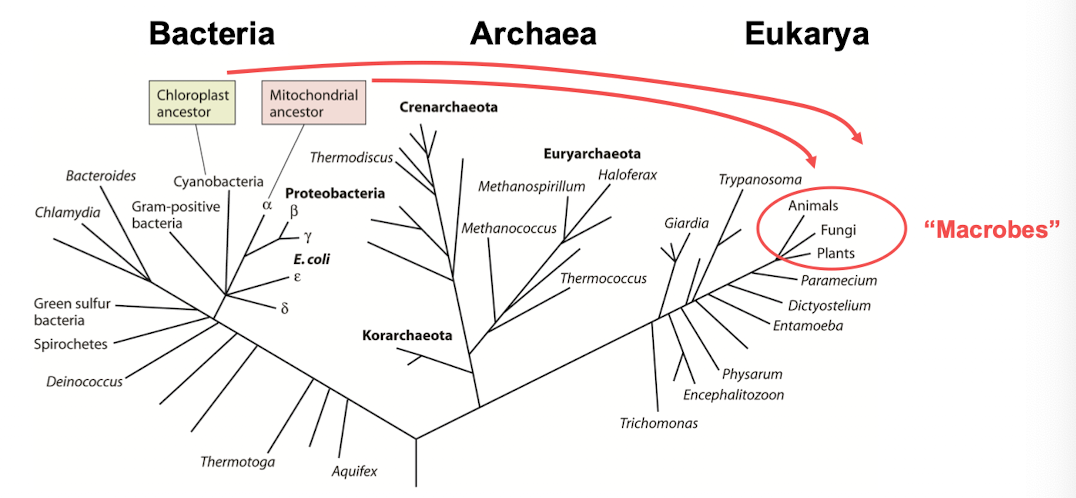
Plasma membrane
Selectively permeable barrier, mechanical boundary of a cell, nutrient and waste transport, location of many metabolic processes (respiration, photosynthesis), detection of environmental cues for chemotaxis
Gas vacuole
An inclusion that provides buoyancy for floating in aquatic environments
Ribosomes
protein synthesis
Inclusions
storage of carbon, phosphate, and other substances; site of chemical reactions (microcompartments); movement
Nucleoid
Localization of genetic material (DNA)
Periplasmic space in gram negative and gram positive bacteria
Gram-negative bacteria: contains hydrolytic enzymes and binding proteins for nutrient processing and uptake
Gram-positive bacteria: may be smaller or absent
Cell wall
protection from osmotic stress, helps maintain cell shape
Capsules and slime layers
Resistance to phagocytosis, adherence to surfaces
Fimbriae and pili function
Attachment to surfaces, bacterial conjugation and transformation, twitching
Flagella
Swimming and swarming motility
Endospore
Survival under harsh environmental conditions
External Structures in a Prokaryotic cell (3)
Appendages: Flagella, pili/fimbriae
Glycocalyx: capsule, slime layer
S-layer
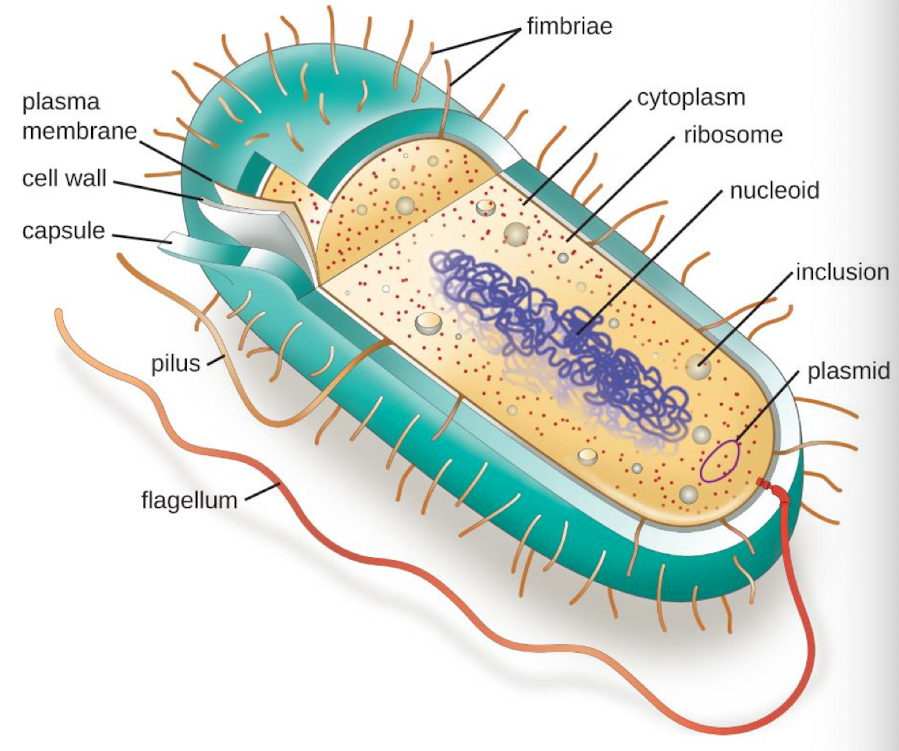
Envelope structures in prokaryotic cell (4)
Outer membrane with LPS
Lipoprotein
cell wall
cell membrane
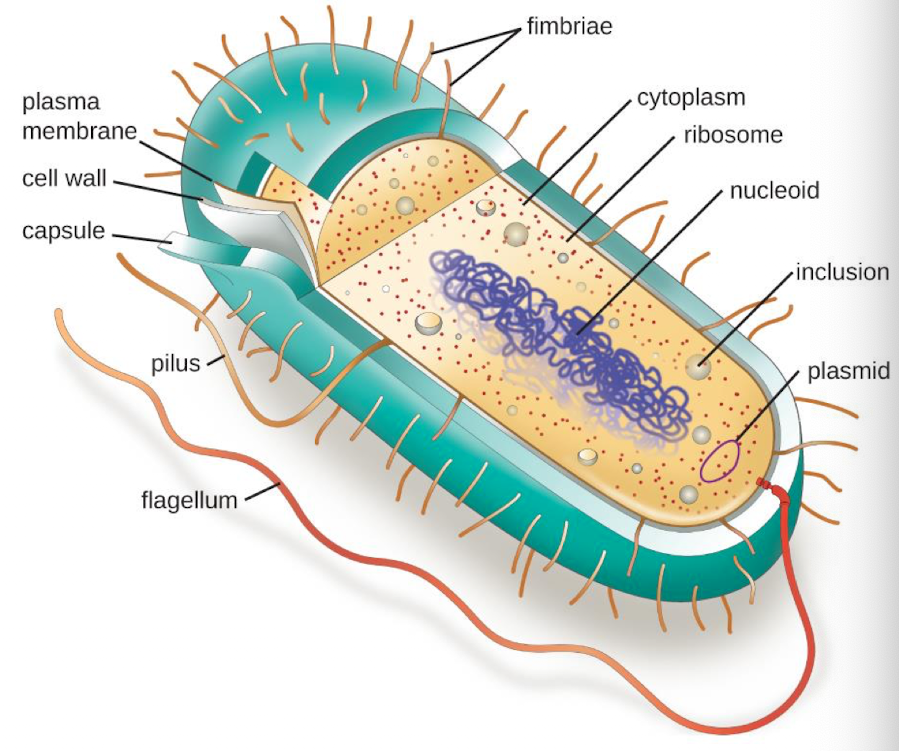
Internal structures in prokaryotic cell (6)
cytoplasm
cytoskeleton
nucleoid/chromosome
ribosomes
inclusions
endospore

What kind of linkages do Eukaryotes and Archaea use?
Eukaryotes: Ester linkage
Archaea: Ether linkage

Which traits do solutes need to be able cross across a phospholipid bilayer?
Small, uncharged, polar molecules
water, urea, glycerol, ethanol
hydrophobic molecules
steroids, O2, CO2, N2
What types of solutes cannot cross a phospholipid bilayer?
large, uncharged polar molecules and ions
H+, monosaccharides
Isotonic Solution Effect
No net movement of water particles, Cell membrane is attached to cell wall
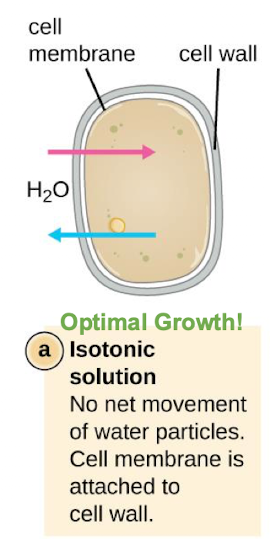
Hypertonic Solution Effect
Water particles move out of the cell. Cell membrane shrinks and detaches from cell wall (plasmolysis)
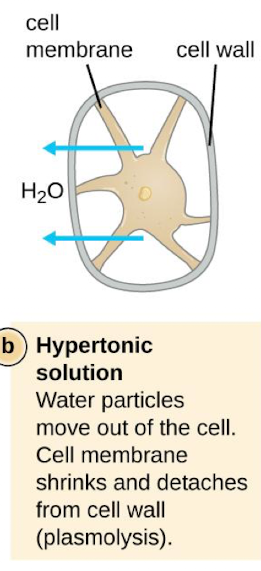
Hypotonic Solution Effect
Water particles move into the cell. Cell wall counteracts osmotic pressure to prevent swelling and lysis
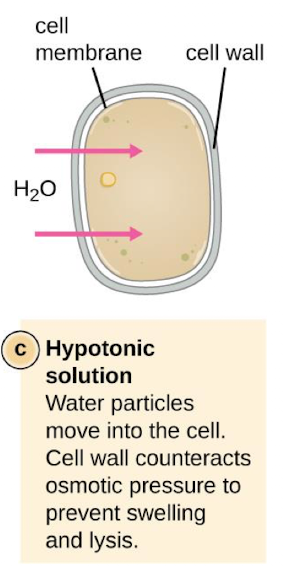
Isotonic Solution Meaning
A solution that has the same solute concentration as another solution. There is no net movement of water particles, and the overall concentration on both sides of the cell membrane remains constant
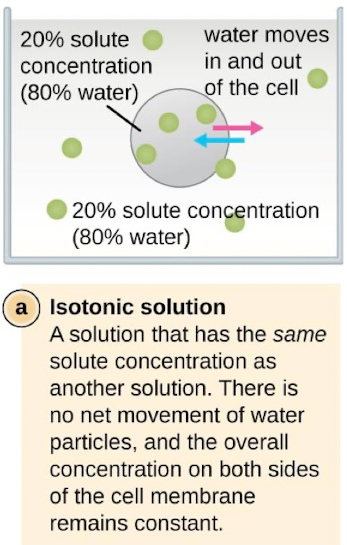
Hypertonic Solution Meaning
A solution that has a higher solute concentration than another solution. Water particles will move out of the cell, causing crenation
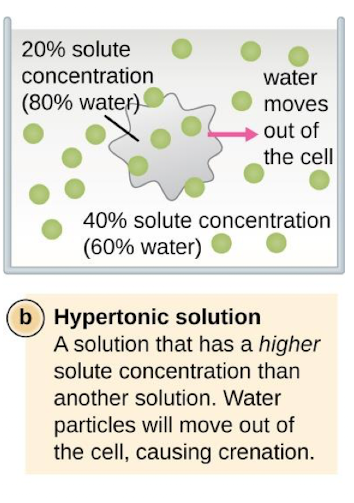
Hypotonic solution meaning
A solution that has a lower solute concentration than another solution. Water particles will move into the cell, causing the cell to expand and eventually lyse
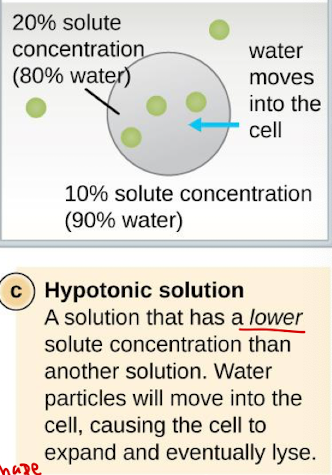
Cell walls protect against what kind of stress?
osmotic
Penicillin inhibits what?
cell wall synthesis
How does penicillin inhibit cell wall synthesis?
Incubation in isotonic medium
Protoplast transfers to hypotonic medium
Swelling due to sudden H2O influx
Lysis (bursts)
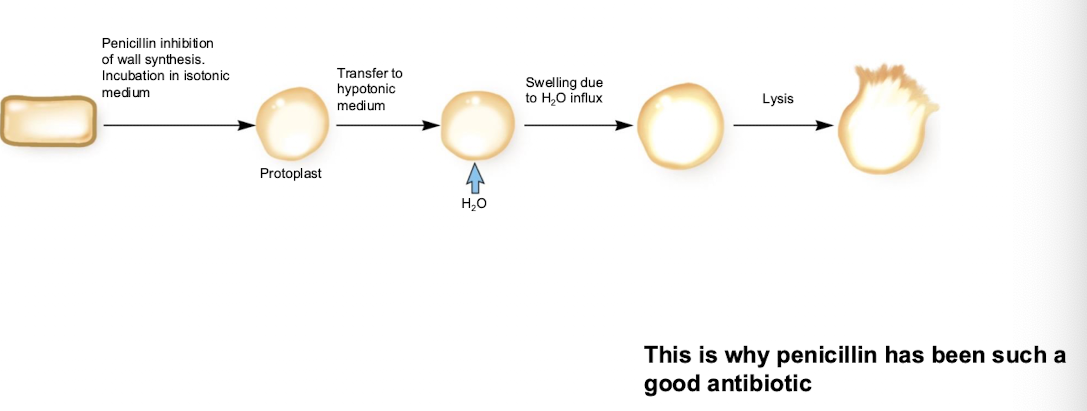
Some differences in gram-positive and gram-negative peptidoglycan (murein)
Gram positive: Pentapeptide, tetrapeptide (Gly5, L-Lys)
Gram-negative: direct link, DAP (diaminopimelic acid)
Similarities: NAG (N-acetylglucosamine), NAM (N-acetylmuramic acid)
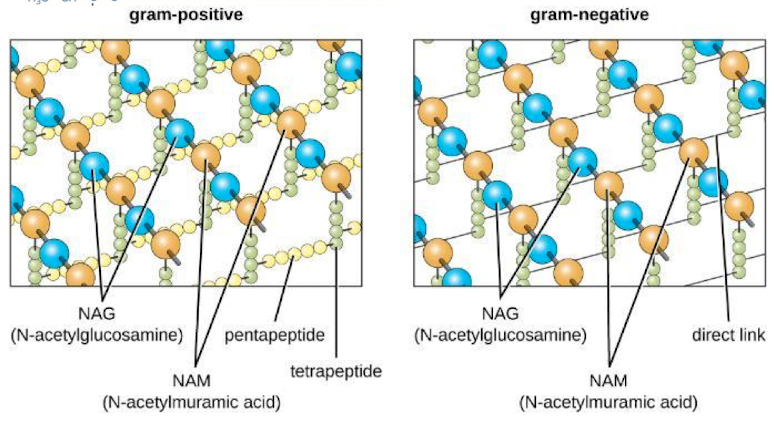
Bacteria Gram-Positive Stains
Has enough membrane to stain with crystal violet stain
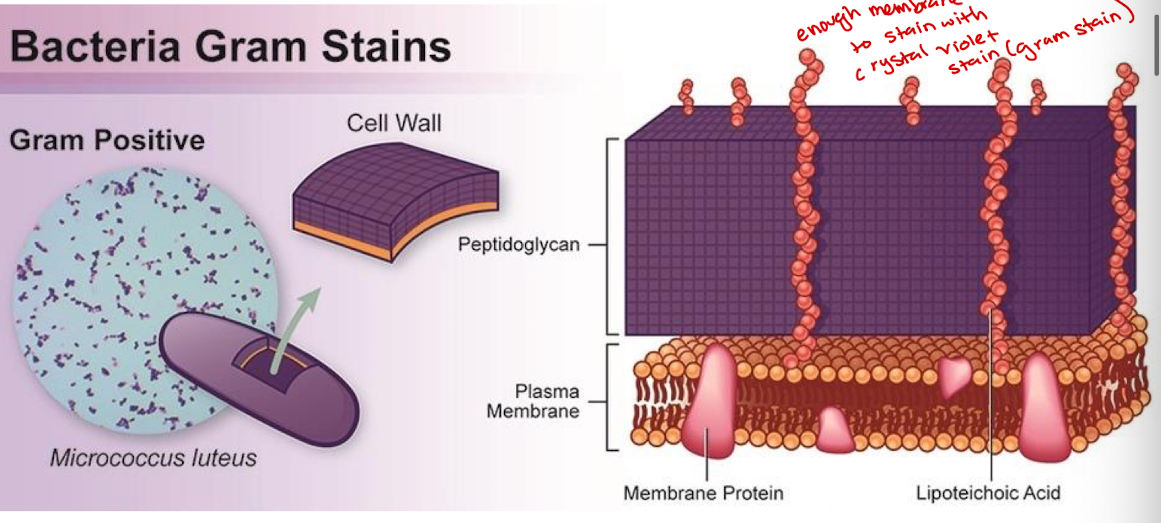
Gram Negative Stain
Does not have enough membrane to stain (plasma membrane, peptidoglycan, outer-membrane)

Which envelope is more complex, gram-negative or gram-positive?
Gram-negative
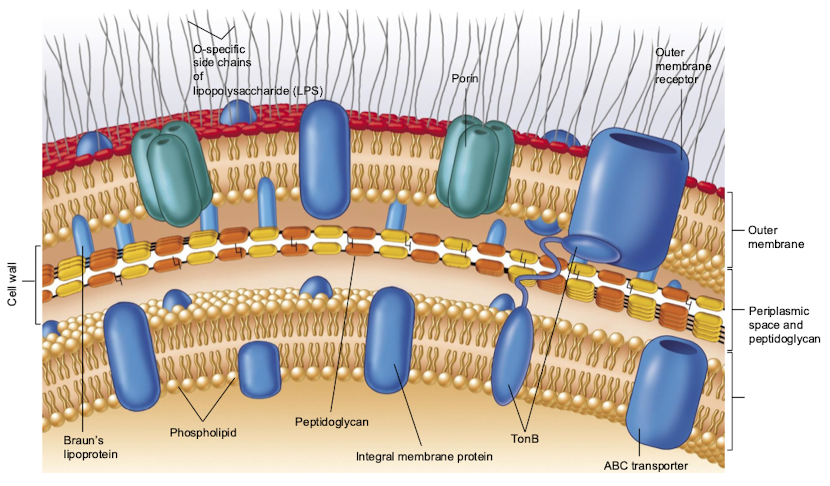
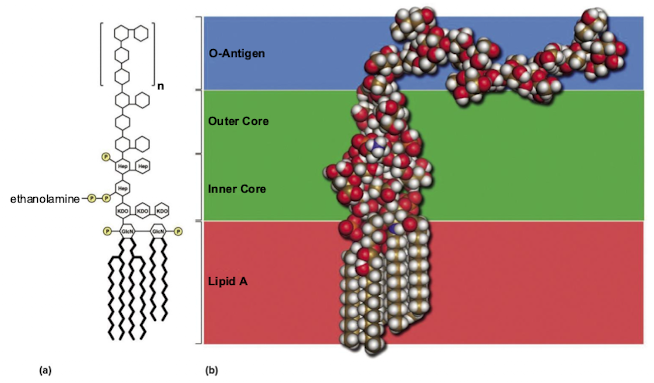
Lipopolysaccharide (LPS) O-antigen/O-polysaccharides traits
vary between species
recognized by immune system
can be used to ID by “O-antigen” type
What is LPS also known as?
“Endotoxin” released when cell dies
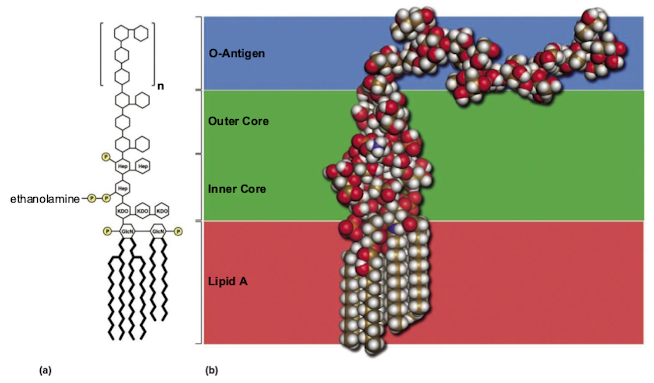
Which is most directly responsible for septic shock events?
Lipid A
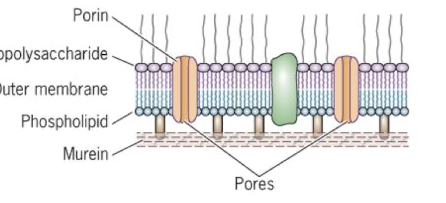
Porins
Channel/gate that allows for selective permeability in the outer-membrane
Increases permeability of outer membrane to small and hydrophilic molecules
Acid-Fast Bacteria
Waxy layer that makes cells resistant to acids, and soaps
Does slow nutrient uptake and growth
Hard to get rid of and is programmed to hunt for phage against Mycobacterium (HHMI SEA PHAGES)
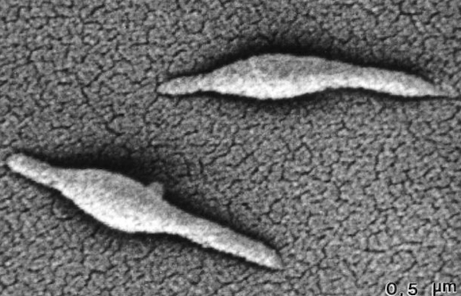
Mycoplasmas
lack cell wall completely (many antibiotics target cell-wall synthesis
Use sterols extensively in their membranes
Live on or inside host cells
What can be found outside of the cell wall?
Glycocalyces
capsule
slime layer
S-layers
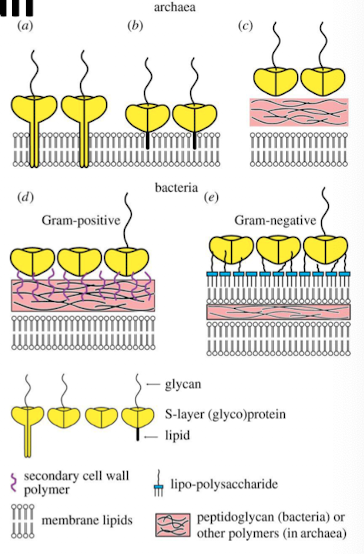
What do flagella consist of?
filament
hook
basal body
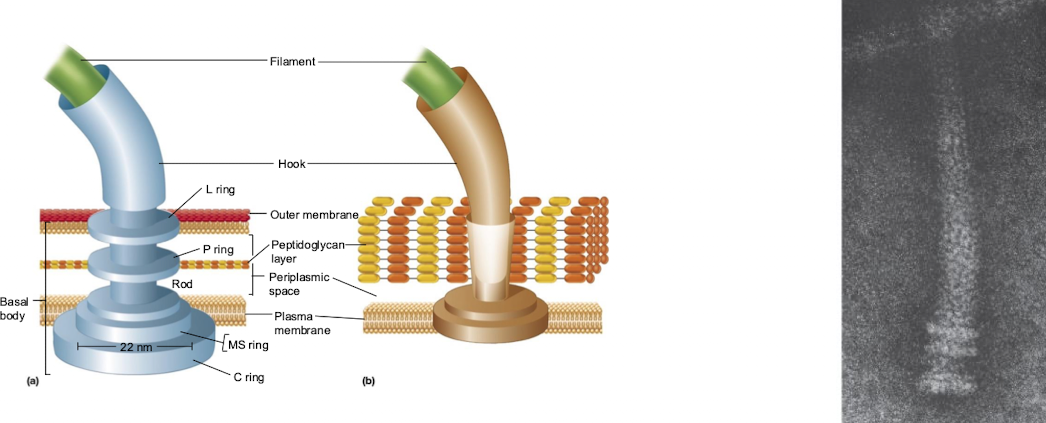
Bacterial pilus made and function
assembled from pilin monomer into a helix; can be rapidly assembled and disassembled to a change length. Can be attachment point for viruses
Function: Conjugation, attachment (“fimbra”) with adhesions at tip, twitching motility

Nucleoid (Cell Interior)
DNA is not strictly separated from rest of cell
Transcription and translation occur together
Organizes DNA
Genome size
~Potentially 10MB or more
Genome size corresponds to complexity
What type of chromosome do bacteria typically have?
A singular circular chromosome
What helps bacterial DNA form supercoiled loops
DNA-binding proteins
How are repulsive charge effects of DNA neutralized in bacteria?
By cations binding to the DNA
What enzymes control supercoiling in bacterial DNA?
DNA gyrase and Topoisomerase I
Role of DNA gyrase in bacterial supercoiling
Utilizing ATP to actively wind DNA into negative supercoils
What does “Reverse Gyrase” do?
Actively winds DNA into a positive supercoil
How does Topoisomerase I function in bacteria?
Does not use ATP and allows DNA to relax towards a less supercoiled state
Difference between positive and negative supercoiling
Positive supercoiling occurs with left-handed twists, while negative supercoiling occurs with right-handed twists
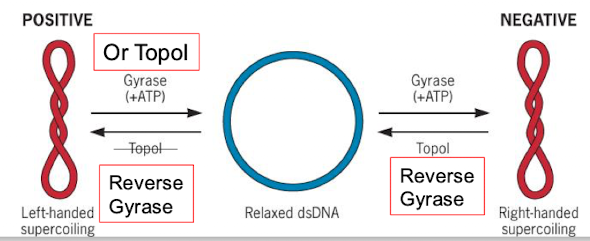
What does the interior of the nucleoid exclude?
ribosomes
What happens when genes are transcribed?
They are unspooled and made available to RNA polymerase along the surface of the nucleoid
How quickly do ribosomes have access to new mRNA transcripts?
almost immediately
Cytoplasm density
very dense to keep local concentration high
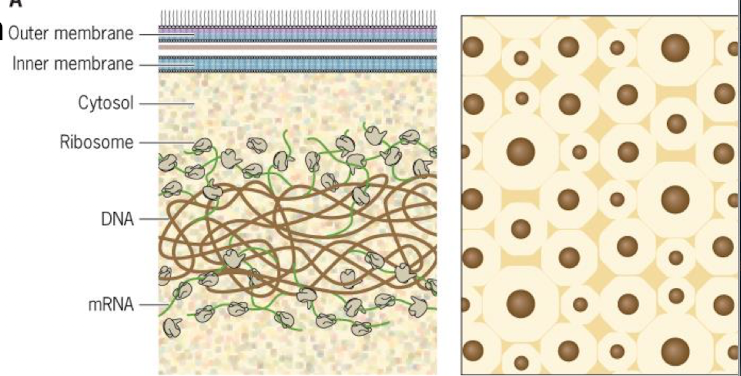
Cytoplasm crowding
aids protein folding and other chemical reactions
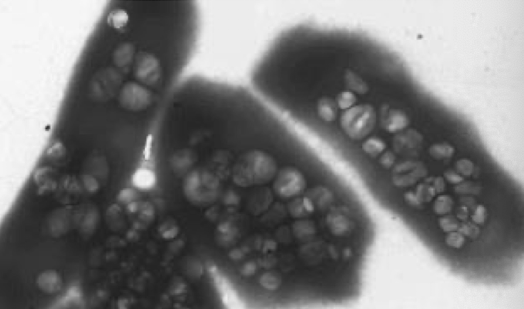
Specialized Structures- Gas Vesicles: Function
Can tune buoyancy for optimum light gathering
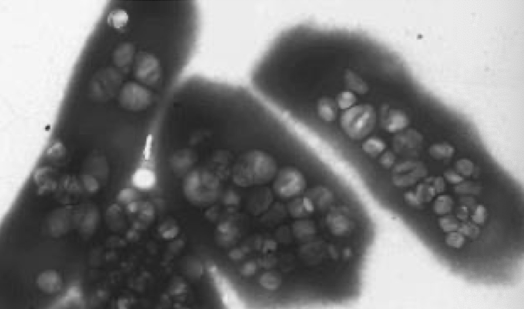
Specialized Structures- Gas Vesicles: Common in?
Aquatic photosynthetic microbes like Cyanobacteria
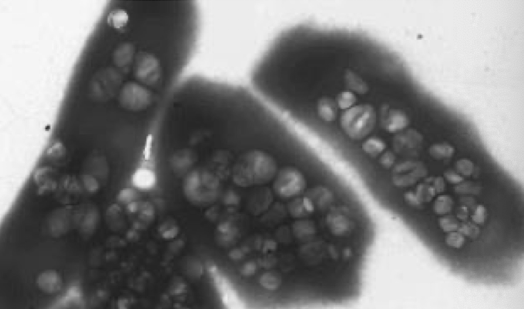
Specialized Structures- Gas Vesicles: Protein shell permeability
Protein shell permeable to gas but impermeable to water
Note: Gas diffuses to reach equilibrium and is not pumped in or stored in higher concentrations
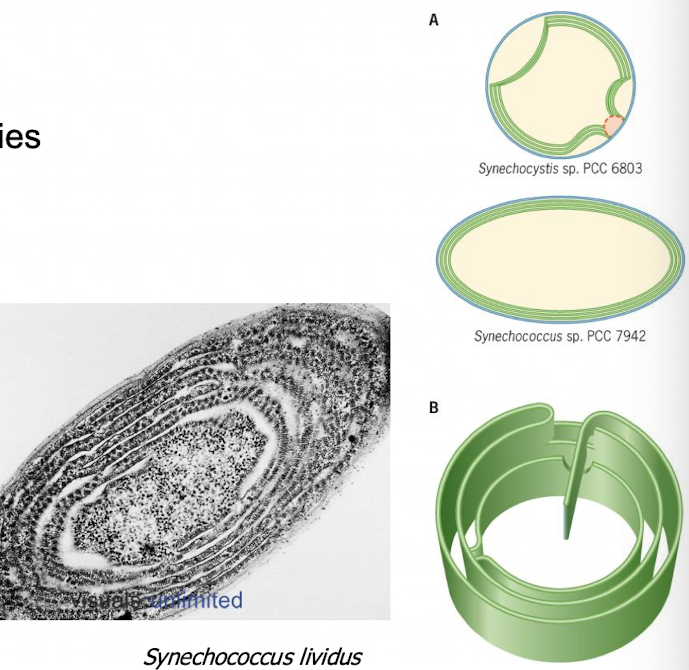
Specialized Structures- Thylakoids: Function Thylakoids: Function
Enhance light-gathering abilities of photosynthetic bacteria by greatly increasing the membrane surface area
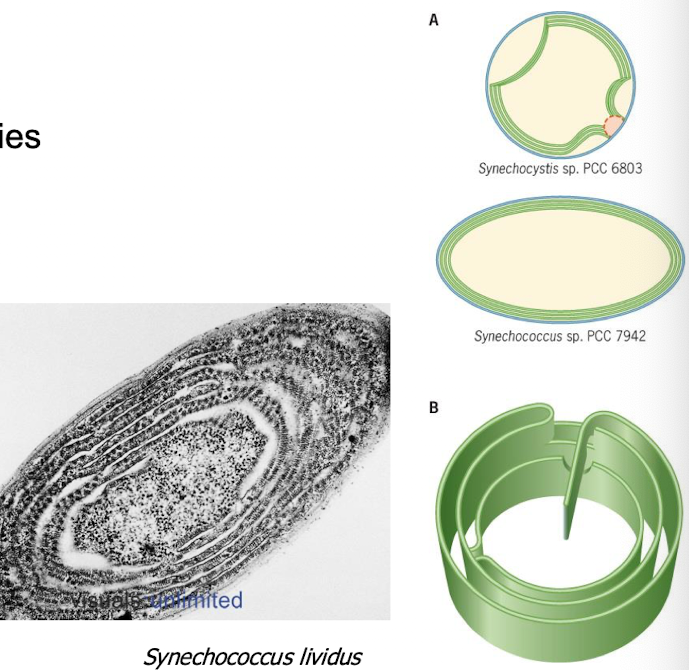
Specialized Structures: Thylakoids: Made up of
Stacks of membrane sac with shared lumen
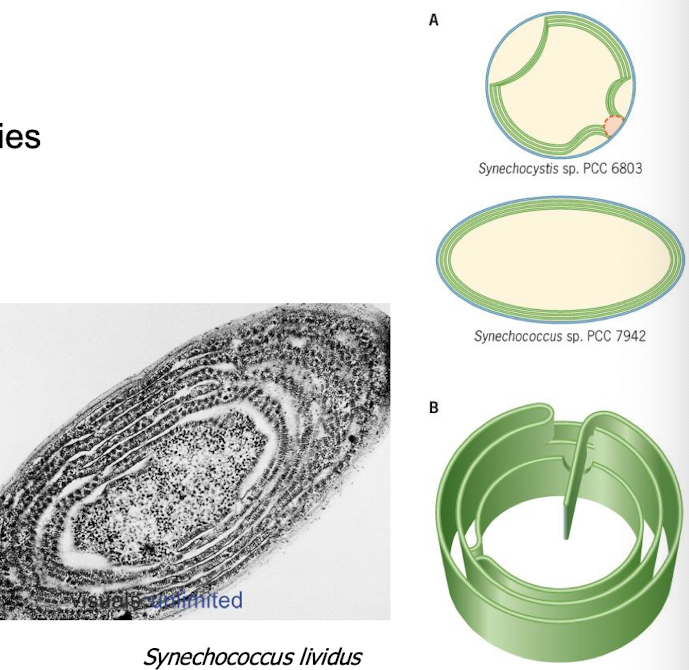
Specialized structures- Thylakoids: Similar structures
Similar structures made by chemolithotrophs

Specialized functions- Carboxysomes: function
Used in bacteria that fix CO2
Enhance the function of RubisCo
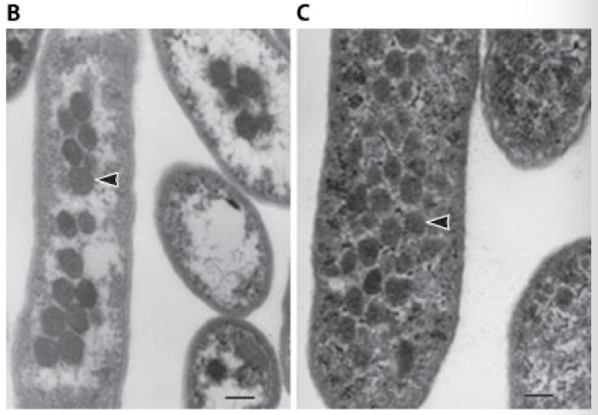
Specialized structures- Carboxysomes: Made of
protein shells
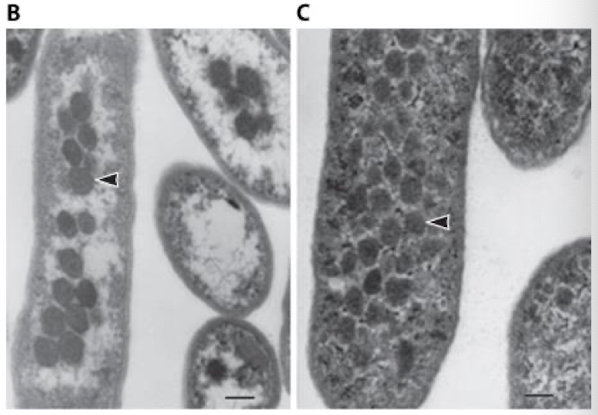
Specialized structures- Carboxysomes: Similar structures
Heterotrophic bacteria sometimes have similar structures
Enterosomes: no RuBisCo but allow to metabolize other compounds with harmful intermediates
Specialized Structures- Storage granules: Also known as?
Refractile inclusion bodies

Specialized Structures- Storage Granules: function
Store useful materials when in abundance for later use when materials are lacking

Specialized structures- Storage granules: Inorganic materials commonly stored
Sulfur, calcium, phosphate
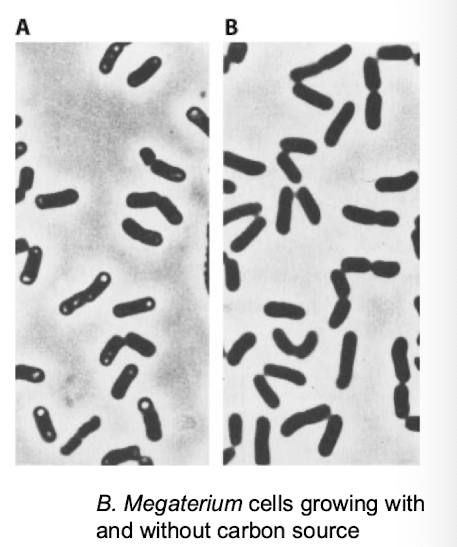
Specialized structures- Storage granules: Types of organic polymers stored
Polyhydroxyalkanoates (PHA)
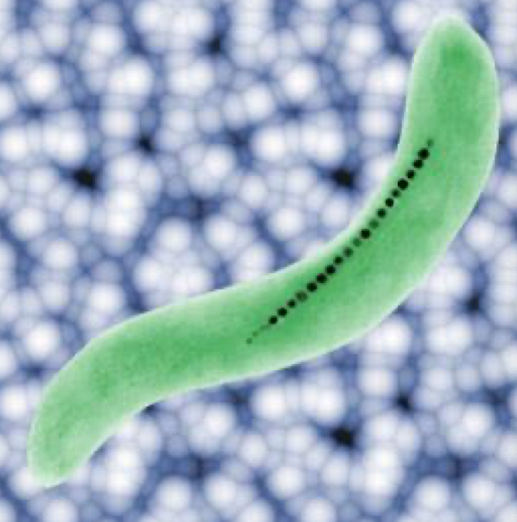
Specialized structures- Magnetosomes: What are they
Membrane-bound, iron-containing structures in certain bacteria
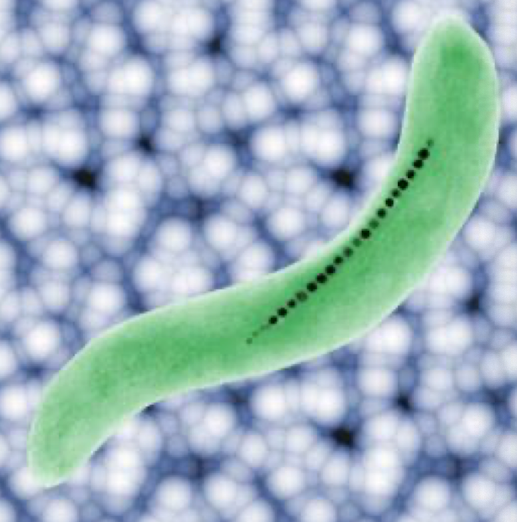
Specialized structures- Magnetosomes: Function
Several crystals are chained together to act as compass needle

Specialized structures- Magnetosomes: Location in cell
Attached to cell membrane
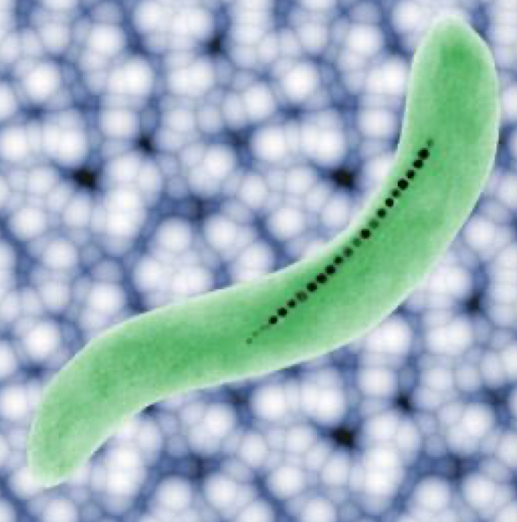
Specialized Structures- Magnetosomes: Primary compounds found in it
Fe3O4 (Magnetite) or Fe3S4 (greigite)
What are 5 specialized functions of bacteria?
Magnetosomes
storage granules
Carboxysomes
Thylakoids
Gas Vesicles
Bacteria vs Archaea: Plasma membrane lipids
Bacteria: Ester-linked phospholipids form a lipid bilayer
Archaea: Glycerol dieters form lipid bilayers; glycerol tetraethers form lipid monolayers
Bacteria vs Archaea: Cell wall constituents
Bacteria: Peptidoglycan is present in nearly all; some lack cell walls
Archaea: very diverse but peptidoglycan is always absent: some consist of S-layer only, others combine S-layer w/polysaccharides or proteins or both; some lack cell walls
Bacteria vs Archaea: Inclusions present?
Yes to both, including gas vacuoles
Bacteria vs Archaea: Ribosome size
70S for both
Bacteria vs Archaea: Chromosome structure
Bacteria: most are circular. double stranded (ds) DNA
Archaea: All known are circular, dsDNA
Bacteria vs Archaea: Plasmids present
Bacteria: yes, circular and linear dsDNA
Archaea: yes, circular, dsDNA
Bacteria vs Archaea: External structures
Bacteria: Flagella, fimbriae (pili) common
Archaea: Archaella, pili common
Bacteria vs Archaea: Capsules or slime layers
Bacteria: Common
Archaea: Rare
Archaeal envelopes membranes
Can provide more rigidity and structure than bacterial membranes
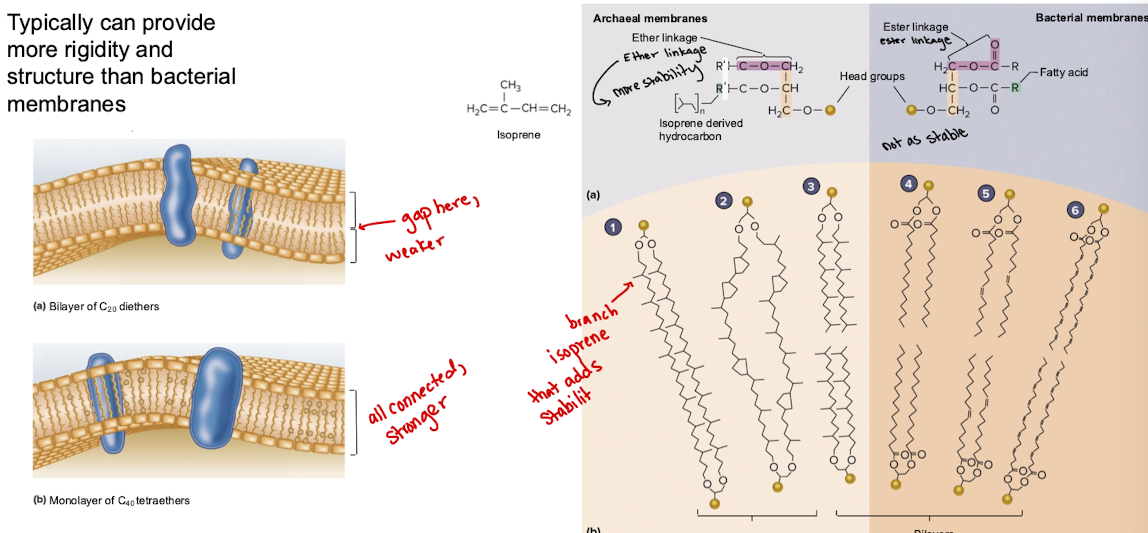
What is a different linkage and acid that bacteria and archaea have?
Linkage in Archaea: Lysozyme-insensitive
Acid in Archaea: N-Acetyltalosaminuronic acid
Acid in Bacteria: N-Acetylmuramic acid
Bacteria vs Archaea: Archaeal Ribosomes
Somewhat “intermediate” between bacteria and Eukaryotes
Bacteria vs Archaea: Proteins
Archaea can use histone-like proteins in chromosome management; other nucleoid-associated proteins are similar in use to Bacteria but differ in structure